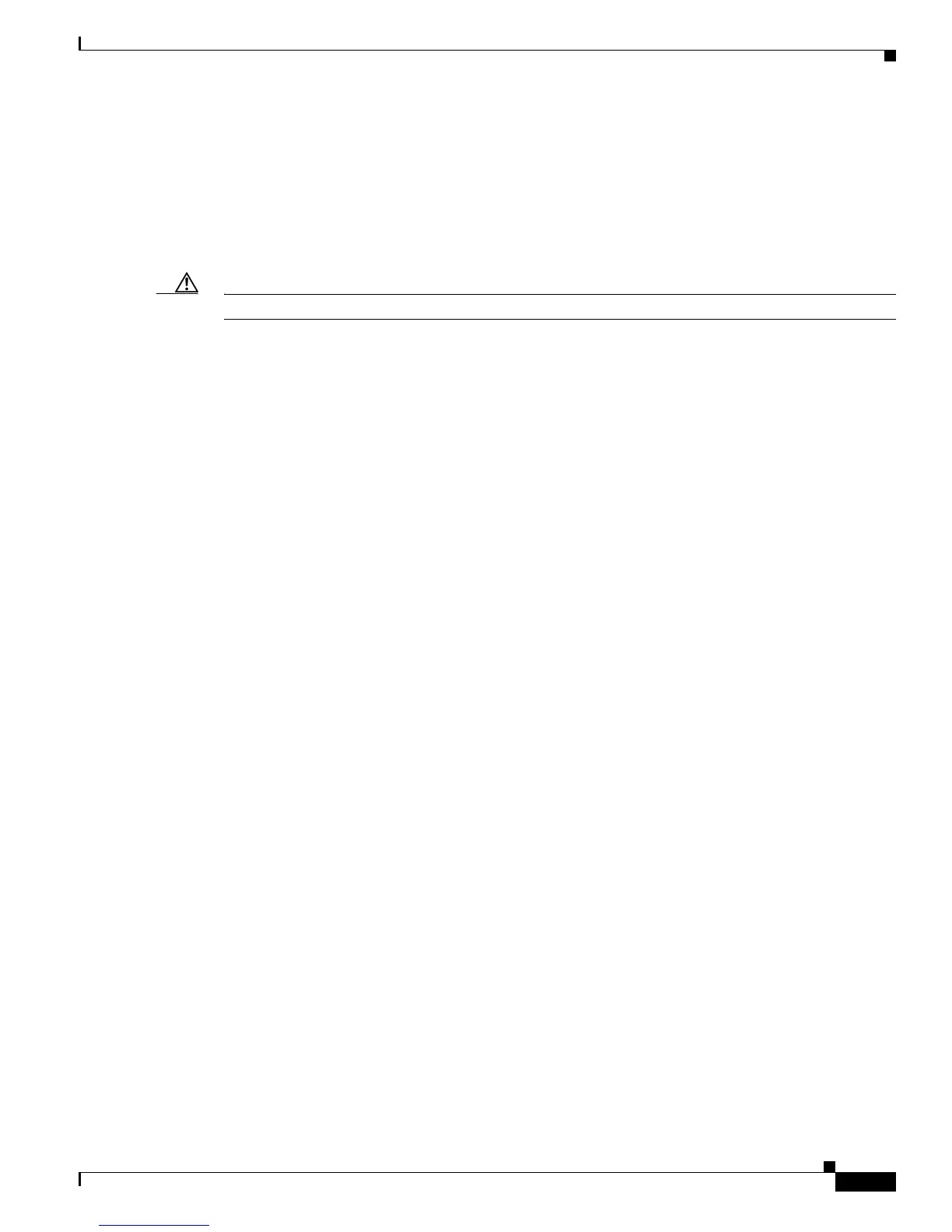B-5
Catalyst 2950 and Catalyst 2955 Switch Software Configuration Guide
78-11380-10
Appendix B Working with the Cisco IOS File System, Configuration Files, and Software Images
Working with the Flash File System
Use the /recursive keyword to delete the named directory and all subdirectories and the files contained
in it. Use the /force keyword to suppress the prompting that confirms a deletion of each file in the
directory. You are prompted only once at the beginning of this deletion process. Use the /force and
/recursive keywords for deleting old software images that were installed by using the archive
download-sw command but are no longer needed.
For filesystem, use flash: for the system board flash device. For file-url, enter the name of the directory
to be deleted. All the files in the directory and the directory are removed.
Caution When files and directories are deleted, their contents cannot be recovered.
Copying Files
To copy a file from a source to a destination, use the copy [/erase] source-url destination-url privileged
EXEC command. For the source and destination URLs, you can use running-config and startup-config
keyword shortcuts. For example, the copy running-config startup-config command saves the currently
running configuration file to the NVRAM section of flash memory to be used as the configuration during
system initialization.
You can also copy to and from special file systems (xmodem:, ymodem:) as the source or destination
for the file from a network machine that uses the Xmodem or Ymodem protocol.
Network file system URLs include ftp:, rcp:, and tftp: and have these syntaxes:
FTP—ftp:[[//username [:password]@location]/directory]/filename
Remote Copy Protocol (RCP)—rcp:[[//username@location]/directory]/filename
TFTP—tftp:[[//location]/directory]/filename
Local writable file systems include flash:.
Some invalid combinations of source and destination exist. Specifically, you cannot copy these
combinations:
• From a running configuration to a running configuration
• From a startup configuration to a startup configuration
• From a device to the same device (for example, the copy flash: flash: command is invalid)
For specific examples of using the copy command with configuration files, see the “Working with
Configuration Files” section on page B-8.
To copy software images either by downloading a new version or uploading the existing one, use the
archive download-sw or the archive upload-sw privileged EXEC command. For more information, see
the “Working with Software Images” section on page B-19.
Deleting Files
When you no longer need a file on a flash memory device, you can permanently delete it. To delete a file
or directory from a specified flash device, use the delete [/force] [/recursive] [filesystem:]/file-url
privileged EXEC command.

